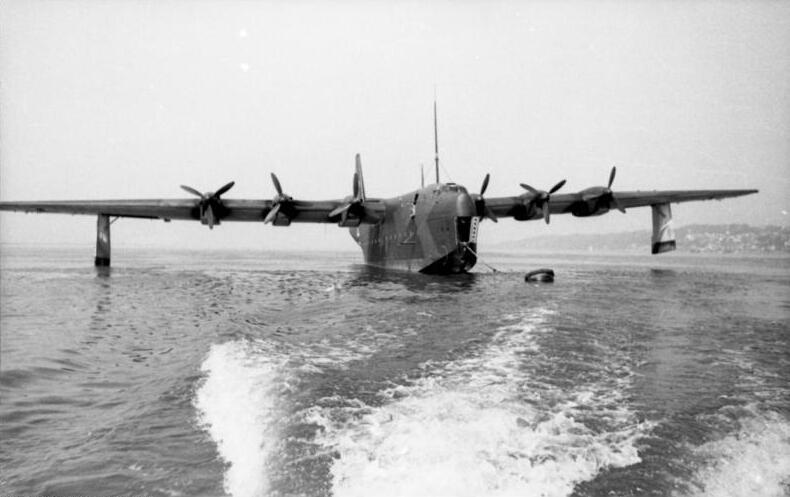

Some of the P-51s are provided by the 361st Fighter Group. One of these aircraft is flown by Major. Urban L. (Ben) Drew. As the 361st approached its break-off point south of Sweden, Drew saw a twin-engine bogey skimming the water off the German coast. He is given permission to investigate and, with two wingmen, headed for the deck, where he destroyed an He-111 bomber.
Climbing back up, he spotted “the biggest aircraft I had ever seen” sitting on the water at a seaplane base. The six-engine aircraft he and his wingmen spotted was later acknowledged to be a BV-238 V1, a new very-long-range transport and reconnaissance flying boat that had just finished its operational tests. (Ron Babuka)


http://en.wikipedia.org/wiki/Blohm_%26_Voss_BV_238
According to American sources, the BV 238 V1 was destroyed while docked on Schaalsee in September 1944 by North American P-51 Mustangs of the US 361st Fighter Group. The lead Mustang, “Detroit Miss”, was piloted by World War II pilot Lieutenant Urban “Ben” Drew, and another was piloted by William D. Rogers. This represented the largest aircraft to be destroyed during the war. Drew was told after the attack that he had destroyed a BV 222 Wiking (another large flying boat). He continued to believe this was the case until he was contacted by the BBC in 1974 for a documentary and told that their research had determined that the aircraft he had destroyed was actually the BV 238 V1, undergoing flight tests at the seaplane base at Schaal Lake.[3]
German sources, based in part on the testimony of nearby inhabitants and Blohm & Voss employees– claim that the BV 238 V1 was discovered by the RAF between 23 April and 26 April 1945. The Allies were concerned that Hitler could use it to escape to South America and so an attack followed shortly afterwards. The aircraft was attacked by Hawker Typhoons, or Hawker Tempests. Their strafing set the engines alight and the aircraft burnt and sank with only part of a wing remaining above the surface.[3]